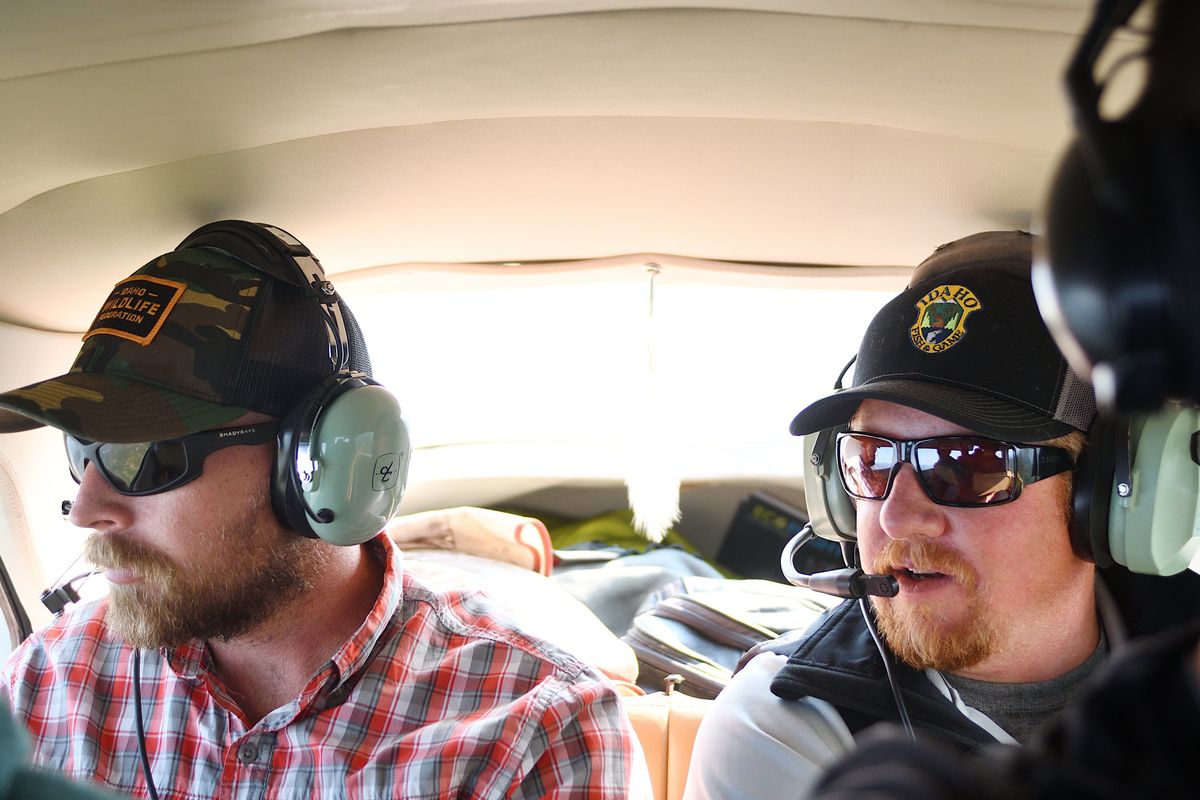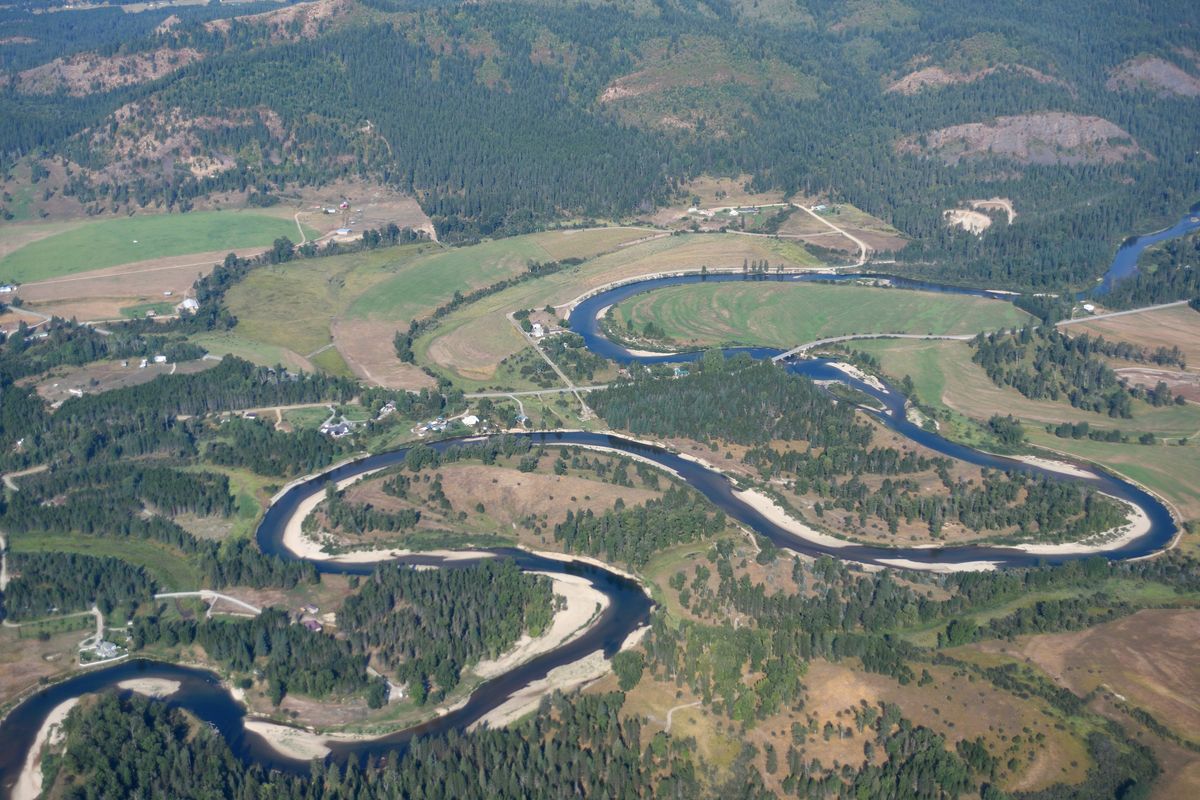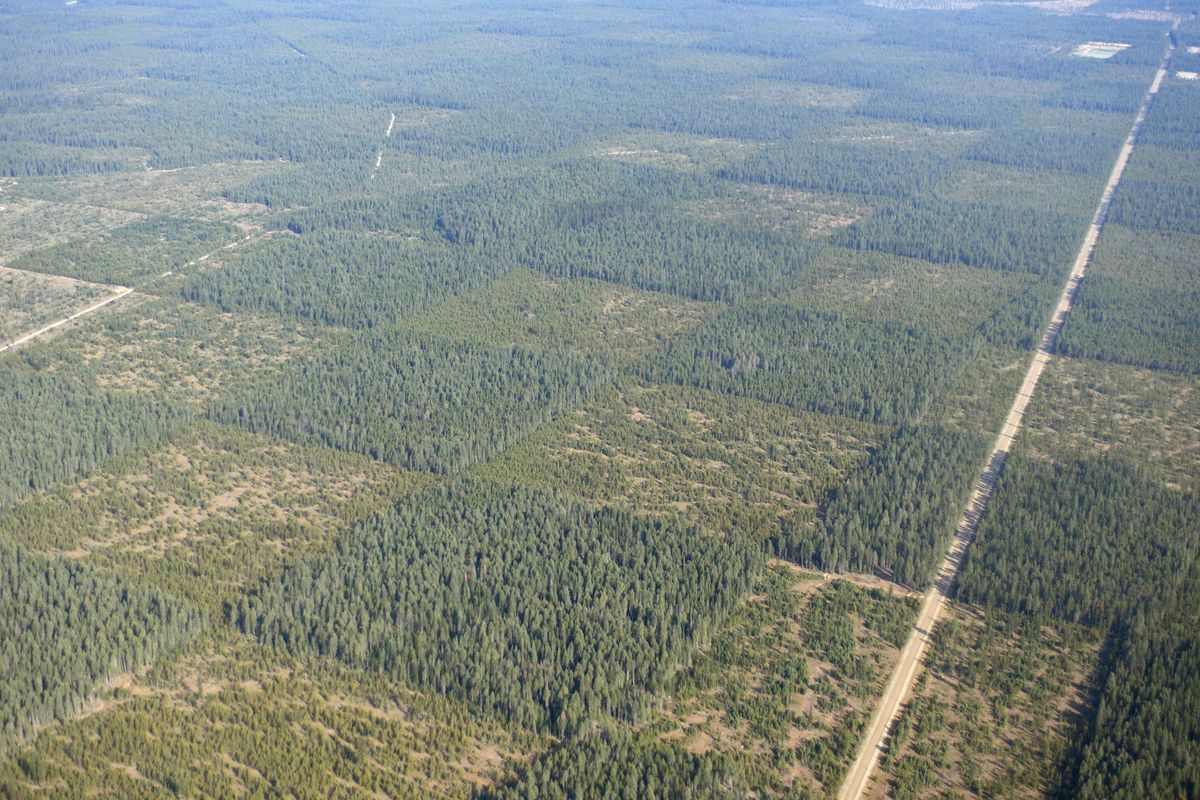A look at the Priest River from the skies
The Priest River winds back and forth Aug. 31 in North Idaho. (Colin Tiernan/The Spokesman-Review)Buy a print of this photo
I go hiking nearly every summer weekend, and nearly every one of those hikes reaches its literal and metaphorical high point atop a Pacific Northwest mountain.
Mountaintops mean views. Views of snowy peaks and aquamarine lakes. Dark rivers winding through green valleys. Thick carpets of conifers that undulate over ancient hills before fading into the horizon.
Everyone loves good views. I’d hazard a guess it’s because they let us see the world from a rare perspective. Up high, you can take in all at once what you see in snippets down below. Each snapshot on the trail might be beautiful in its own way, but from the mountaintop you see everything from a fresh angle. The view lets you see the beauty in the vastness, the full picture.
Thanks to an invite from EcoFlight and Idaho Rivers United, I had a chance on Aug. 31 to get a more thorough picture of the Priest River than any mountaintop could provide, from the comfort of a Cessna.
EcoFlight is a Colorado-based nonprofit that advocates for the protection of wild lands by flying people over them. The concept, EcoFlight Executive Director Jane Pargiter told me, is to give people an aerial perspective of conservation and public lands issues throughout the West.
This year, EcoFlight has flown people over a newly opened wildlife crossing in Southern California, the site of the proposed Uinta Basin Railway in Utah and a shuttering generator station in New Mexico, to list a few examples.
Founder and chief pilot Bruce Gordon said his organization tries to remain apolitical. Putting stakeholders together on a plane and showing them the land from above can jump-start valuable conversations, he said.
In this case, EcoFlight and the organization it partnered with – Idaho Rivers United – intended to jump-start conversations about the Priest River.
The current Priest River controversy comes from a proposal that would infuse the river with cold water from the depths of Priest Lake.
The Kalispel Tribe of Indians and Idaho Fish and Game first presented the idea of a cold-water bypass in 2013. By shunting cool water from Priest Lake’s depths over Outlet Dam and into the Priest River, the tribe and Fish and Game could improve fishing opportunities. Studies commissioned by the tribe and Idaho found the bypass would lower river temperatures enough for trout to survive hot summers, without having any negative impacts on Priest Lake.
Many Priest Lake homeowners oppose the idea, however, and argue it could have unintended negative consequences.
As a reporter, I’m like EcoFlight – apolitical. But you don’t need to take a stance on the bypass to appreciate North Idaho’s beauty from the sky.
My first takeaway was how being in a plane, flying low, forces you to appreciate geology.
Satellite imagery is great, but this was different. Somehow, the Priest River feels mightier from the air. Watching it lazily ribbon across the country, it sinks in that it’s has been gouging its ever-changing path for eons. You get a better sense of geologic timescales from the air.
The trees struck me, too. They look so uniform from above, like blades of grass in a giant lawn. Anything man-made jumps out of the monotony in contrast. Roads and houses call attention to themselves. A checkerboarded logging area was one of the strangest sights I’ve seen, perfect squares of dark old and bright young forest side by side for miles.
Everything looked greener and bluer from the plane. Priest Lake, with its tiny islands, looked practically Caribbean.
Not all of my observations were landscape related. The smoothness of the half-hour flight surprised me. I’m someone who prefers land to air and sea, but being aboard the Cessna 210 with Gordon, a biologist, a Kalispel tribe outreach coordinator and two conservation advocates, was never scary. It was easily the most comfortable flight I’ve had.
I’ll keep climbing mountains and soaking in the views, but flying low might be the best way to appreciate nature’s grandeur and see the full picture. If you ever get a chance to do it, take it.




